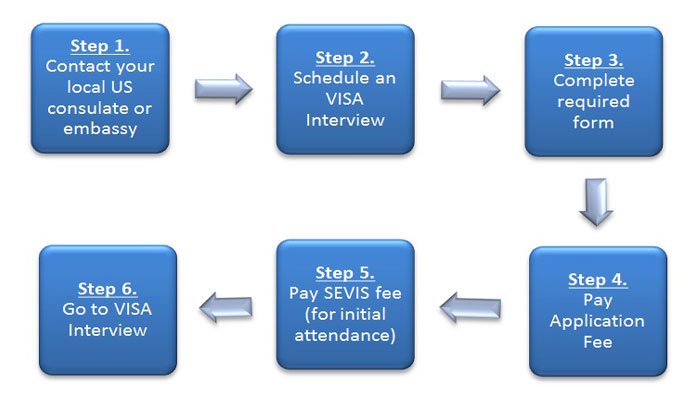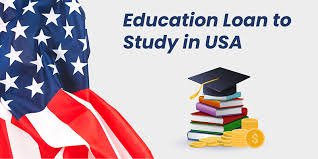Landing a job in the United States is a dream for many professionals in India — and with good reason. The U.S. offers a dynamic job market, diverse work environments, competitive salaries, and vast growth opportunities across various industries. However, navigating the U.S. job market as a foreign applicant is not as straightforward as applying for jobs locally.
Securing employment abroad, especially in a country like the United States, requires careful planning, research, and the right approach. This guide breaks down the process into clear, actionable steps — from researching the market to getting your visa approved — to help you increase your chances of success.
Step 1: Research the U.S. Job Market Thoroughly
Applying for a job in the U.S. without understanding its employment landscape is one of the most common mistakes made by international job seekers. Every country has its own unique economic structure, hiring trends, and talent demands — and the U.S. is no exception.
Why research matters:
- The most in-demand industries in the U.S. may differ from those thriving in India.
- Your skillset might be more (or less) valuable in the American market.
- Economic trends, such as recession cycles or tech booms, influence hiring.
Key sectors hiring in the U.S.:
- Technology and Software Development
- Healthcare and Life Sciences
- Finance and Consulting
- Engineering and Manufacturing
- Digital Marketing and E-commerce
- Data Science, AI, and Machine Learning
- Logistics and Supply Chain
Before applying, identify where your skills fit best in the U.S. labor market. Explore current hiring trends, emerging sectors, and geographic preferences. For example, tech jobs are concentrated in cities like San Francisco, Seattle, and Austin, while finance jobs thrive in New York and Chicago.
Tip:
Use U.S. government labor data or job portals to explore salary benchmarks, job titles, and demand forecasts. This will help you target the right industries and tailor your resume accordingly.
Step 2: Create a U.S.-Style ATS-Friendly Resume and Cover Letter
Your resume is your first impression — and in the U.S., it must pass through a digital gatekeeper known as the Applicant Tracking System (ATS). This software scans resumes to determine if a candidate meets the employer’s criteria.
What is an ATS-friendly resume?
An ATS-friendly resume uses clear formatting, standard fonts, and keyword-rich job descriptions. It avoids unnecessary graphics, tables, or overly creative layouts that confuse the software.
Key features of a U.S.-style resume:
- 1-2 pages in length
- Professional summary at the top
- Bullet-point achievements with metrics (e.g., “Increased sales by 20%”)
- Clear job titles and consistent formatting
- Excludes personal details such as marital status, religion, or photo
Your cover letter should be concise, tailored to each role, and highlight your interest in the company, key achievements, and willingness to relocate or work remotely.
Tools to consider:
Use a basic Word or Google Docs resume template that emphasizes readability. Plenty of free tools can also check your resume for ATS compliance.
Step 3: Apply on U.S.-Based Job Portals and Networking Platforms

Once your documents are ready, the next step is to start applying. The U.S. job application process is structured and formal, and most hiring is done through well-known online platforms.
Top U.S. job portals to explore:
- Company career pages (for direct applications)
- International-friendly platforms focused on relocation or visa sponsorship
- General job boards across a wide range of industries
When applying, customize your resume for each job posting using keywords from the job description. This small effort can make a significant difference in getting past the ATS and catching a recruiter’s attention.
Networking matters:
- Build a strong LinkedIn profile with a professional photo, detailed experience, and endorsements.
- Connect with U.S.-based professionals, hiring managers, and alumni from your university.
- Join industry-specific groups and participate in conversations to increase visibility.
Reaching out directly to recruiters or hiring managers with a personalized message can also help you stand out.
Step 4: Secure Employer Sponsorship
If your application is successful, the employer will likely initiate an interview process, typically conducted virtually. This might include:
- Initial HR screening
- Technical or role-based assessments
- Panel interviews or final discussions
Once selected, you can request sponsorship for a work visa, typically an H-1B or similar category. Many U.S. companies are familiar with this process and have legal teams or immigration consultants to assist.
What is visa sponsorship?
Sponsorship means the employer agrees to submit a petition to U.S. immigration authorities on your behalf. Once approved, this gives you legal permission to work in the U.S.
Even if the employer is new to sponsorship, your qualifications, industry demand, and clarity about the process can help you make a strong case.
Step 5: Begin the U.S. Work Visa Process

After receiving an offer and sponsorship, you can begin the formal visa process. It’s essential to choose the right type of visa, understand its eligibility requirements, and prepare all the required documents carefully.
Common U.S. work visas for Indian citizens:
- H-1B Visa – For specialized professionals (most common)
- L-1 Visa – For intra-company transfers
- O-1 Visa – For individuals with extraordinary ability
- TN Visa – For Canadian and Mexican citizens (not applicable to Indians, but worth knowing if you have dual citizenship)
The H-1B visa requires participation in a lottery process, typically in the first half of the year. Once selected, it can take a few weeks to months for approval.
Tips to avoid delays:
- Submit complete documentation (education certificates, job offer letter, passport, etc.)
- Double-check all forms and fees
- Use reliable and cost-effective currency exchange and money transfer services when paying visa fees
Being proactive, organized, and informed is your best bet in navigating this stage smoothly.
Bonus Tips for Success
- Stay persistent: U.S. hiring processes can be long. Don’t get discouraged by rejections or delays.
- Upskill strategically: Learn tools or certifications relevant to your target role (e.g., AWS, PMP, Google Analytics).
- Improve communication: Clear, confident English is key in interviews and written applications.
- Understand cultural differences: American workplaces emphasize directness, individual achievement, and initiative.
Final Thoughts
Landing a job in the U.S. as an Indian citizen is absolutely possible — but it requires research, the right tools, and a professional approach. From tailoring your resume to U.S. standards to understanding the visa process, every step you take adds up to a stronger, more compelling candidacy.
With patience, preparation, and persistence, your dream of working in the U.S. can become a reality.



